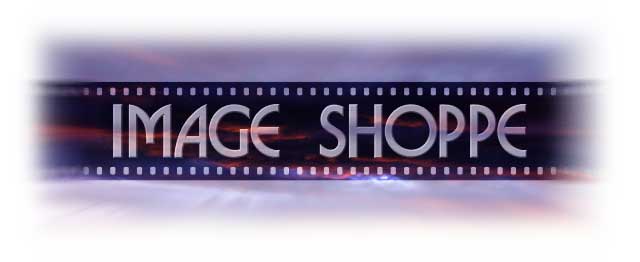
THE HVX200 and bluescreen compositing
One of the most exciting aspects of the new HVX200 camera from Panasonic was the potential fordoing terrific mattes... Hype aside, how would the camera perform? And how would a recording to the P2 card
using the Panasonic DVCPRO codecs compare to uncompressed recordings from the component
outputs when the camera is "live"? I know I wanted to test both 1080p and 720p, as well as the lightly compressed
DVCPRO 50, the SD format with near Digital Betacam quality. I wanted to test a standard "interview" setup, and wanted good results without having to do any hand-work to the composite... as much one click and go as possible.
Why bluescreen and not greenscreen?
I come from a film optical background, and bluescreen is second nature to me. I know how to get good blue, and
frankly, the cheap greenscreen material I had on hand wasn't equal to the nylon backed bluescreen fabric with the
plush, light diffusing surface texture. Also, blue is historically more difficult in digital than green due to increased
noise in the blue channel, so I figured that if a measure of success was possible with blue, it would be even easier
with green!
The setup

Thanks to Tom Richardson and my friends at DATA for providing a space to shoot the test, as well a couple wonderful volunteers for enduring the always awkward on-camera "just do something, you know, maybe flip your hair?" directing encouragement.
The lighting rig was very simple and very inexpensive... a couple 4 foot electronic ballast shop light fixtures with 4200K tubes lit the bluescreen, while the subjects were isolated and hit with a combination of 3000k gelled soft sources from the sides and 3/4 edges, as well as a 200 watt Pepper as a hair light. The camera was white-balanced to the side sources, which helps "boost" the blue quality of the screen, as it was a good 1200 degree cooler than the subject lighting.
The gear

In addition to the HVX, I lugged my Velocity HD system in to capture uncompressed at the same time as clips were
recorded to P2 media. An AJA component to HD-SDI converter allowed me to bring in both 1080 and 720 and record straight to the 4 drive SATA raid housed in the tower. The uncompressed capture process went flawlessly, and with
few surprises. The 1080 24PA material was easy to convert, however the 24 stored in 60 frames of the 720 stream
requires some forethought, as the needed flags telling you which frames are redundant don't come over the
component outs of the HVX.

The Results


Three different approx. 18meg QT's of the results in 720p, here, here, and here. Be kind and save as vrs. streaming, thanks.
Bluntly put, the results were spectacular, and ground-breaking for a camera in this price range. There is simply no reason to consider external uncompressed recording in a situation where you're in total control of your screen and subject. The big test from my point of view was how much harm the DVCPRO 100 codec would introduce into the image compared
to the uncompressed footage. Previous tests I've done with third-party greenscreen clips from the HVX have
been a bit disappointing, as the codec macroblocking showed up in transitional areas in moving (blurred) images. I think I now know why these clips were problematic...
... The "key" (pun intended) is proper illumination levels. In general, if the screen is lit correctly, the codec holds up
very well compared to uncompressed. Lighting for either bluescreen or greenscreen is easy if you have a vectorscope or
waveform monitor on hand. Simply increase the lighting until the color hits the appropriate box on the vectorscope. With blue, that's around 35 IRE.
The second important factor is color purity. Check this frame grab from Edius to see how tight the blue color is, and its corresponding RGB values. This is more difficult on-set to achieve, and requires highly saturated fabric, paint, and if possible, isolating the subject from the screen so you can light it with colored lights to increase the purity.

When would uncompressed be better? If your screen illumination is marginal, or less than ideal in saturation you will have to haul on your levels to get a good matte. In this case, an uncompressed source will prevent the DVCPRO 100 codec "window-screening" effect ruining the soft edges of your matte.
Here's a never before seen (to my knowledge) look at the difference between uncompressed and compressed DVCPRO 100 at the codec level... this image was obtained by taking a still of the uncompressed and differencing it with a frame exported from Edius of the DVCPRO 100 codec, with input and output levels set to 16 and 235 to match the setup-less uncompressed grabs. Next a levels adjustment was done to "pop" the detail into viewing range.

A full resolution 3 meg .png of the above is here.
And a 16meg layered Photoshop document of the original images is here for your bluescreen testing fun.
1080 or 720? Which to use for HD?
I found that the best results with the smoothest edges came from using 1080 footage down-scaled into a
720 comp. Pure 720 material was quite nice as well, but the 1080 withstood the rigors of pulling a matte a
bit better. Scaled down to 720p, the 1080 is a good visual match for the 720p backgrounds.
More to come!
Stay tuned for part 2, with my thoughts on DVCPRO 50, and more!
